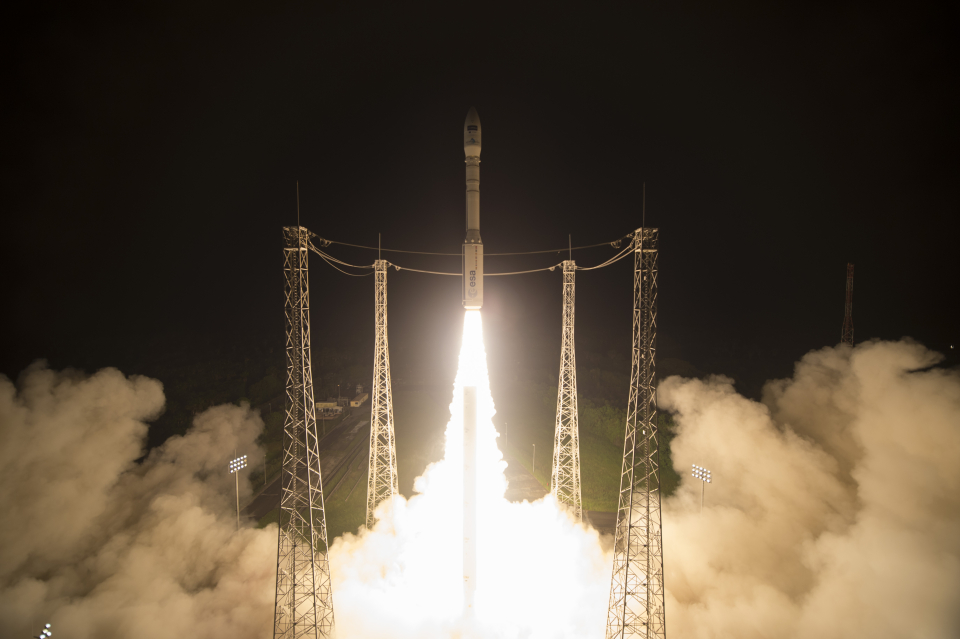Sentinel-2A was launched on 23 June 2015. Sentinel-2B followed on 7 March 2017 and Sentinel-2C on 5 September 2024. All three were launched on a Vega launch vehicle from Europe's Spaceport located in French Guiana. The Copernicus Sentinel-2 mission is part of the European Union’s Copernicus Programme which is aimed at providing accurate and timely information to improve the management of the environment, understand and mitigate the effects of climate change and ensure civil security. It is construed in cooperation with the European Space Agency (ESA), providing the definition and the development of the space- and ground-based system elements. The mission provides high-resolution optical imagery for land monitoring purposes. The data from Sentinel-2 is used for applications such as agriculture, forestry, land use change detection, water quality monitoring, and disaster management.
The Sentinel-2 satellites each carry a single multi-spectral instrument (MSI) with 13 spectral channels in the visible/near infrared (VNIR) and short wave infrared spectral range (SWIR). The MSI is a set of passive optical sensors that capture light reflected by Earth’s surface and atmosphere.
The satellites have a nominal lifetime of about 7.25 years, with a possible 2-year extension. After that, they will be decomissioned. In order to ensure continuity of the mission, two follow-on satellites are being developed: Sentinel-2C was recently launched to eventually replace Sentinel-2A. Sentinel-2D's launch is planned for 2025.

Liftoff of Sentinel-2B on a Vega launcher from Europe’s Spaceport in French Guiana at 01:49 GMT (02:49 CET) on 7 March 2017.
Sentinel-2 constellation
| Satellite | Sentinel-2A | Sentinel-2B | Sentinel-2C | Sentinel-2D |
| Launch Date | 23 June 2015 | 7 March 2017 | 5 September 2024 | 2025 |
| End Date | ||||
| Status | Operational | Operational | Operational | Planned |
| Orbit type | Polar, sun-synchronous | |||
| Altitude | 786 km | |||
| Orbit inclination | 98.62° | |||
| Orbit period | 100.6 minutes | |||
More on Copernicus
The Copernicus Programme is an Earth observation initiative that forms a crucial part of the European Union Space Programme. Managed by the European Commission in collaboration with various European organizations such as the European Space Agency (ESA), the European Organisation for the Exploitation of Meteorological Satellites (EUMETSAT) and the European Centre for Medium-Range Weather Forecasts (ECMWF), Copernicus aims to establish a comprehensive Earth observation capacity that is global, continuous, autonomous, and of high quality. The primary objective of the programme is to provide accurate, timely, and easily accessible information to improve environmental management, understand and mitigate the impacts of climate change, and ensure civil security.
Click here to visit our dedicated Copernicus page